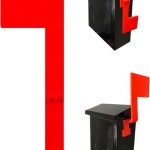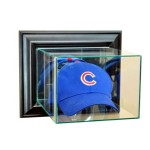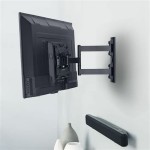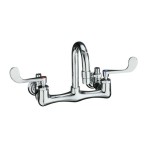Understanding the Benefits of 2-Step Wall Mounted Handrails
Two-step wall mounted handrails, specifically designed for short staircases or steps, provide crucial support and safety. These handrails are more than just aesthetic additions; they are essential safety features that mitigate the risk of falls, particularly for individuals with mobility challenges, the elderly, or those recovering from injuries. This article will explore the various advantages, design considerations, installation guidelines, and maintenance tips associated with 2-step wall mounted handrails, offering a comprehensive understanding of their importance and practicality.
The primary objective of a 2-step wall mounted handrail is to enhance accessibility and promote independent living. By providing a stable and secure grip, these handrails empower individuals to navigate steps with greater confidence and reduced risk of injury. Unlike longer handrails designed for extended staircases, these shorter models are specifically tailored for minimizing tripping hazards on single or double steps. The compact design also makes them suitable for small spaces where a full-length handrail would be impractical or visually obtrusive.
Enhanced Safety and Accessibility
The most significant advantage of a 2-step wall mounted handrail is the enhanced safety it provides. Falls are a leading cause of accidental injuries, especially among older adults. A properly installed handrail offers a secure point of contact, enabling users to maintain their balance and control their movement as they ascend or descend steps. This is especially beneficial for individuals with balance impairments, joint pain, or muscle weakness. The consistent support provided by the handrail reduces the strain on the lower body, minimizing the risk of stumbles and falls.
Furthermore, 2-step wall mounted handrails promote accessibility for individuals with disabilities or mobility limitations. They can assist wheelchair users in transferring to and from steps, providing a stable support during the transition. Individuals who require assistive devices, such as canes or walkers, can also benefit from the added stability and support offered by a handrail. Installing a handrail can effectively transform a potentially hazardous area into a more accessible and user-friendly environment.
Code compliance is another critical aspect of handrail installation, particularly in public spaces or commercial buildings. Building codes often specify minimum requirements for handrail height, diameter, and spacing to ensure the safety and accessibility of all users. Adhering to these regulations is essential for preventing accidents and ensuring compliance with accessibility standards.
Design Considerations and Material Choices
The design of a 2-step wall mounted handrail plays a crucial role in its functionality and aesthetics. Several factors must be considered when selecting or designing a handrail, including the height, diameter, material, and mounting hardware. The optimal handrail height should be comfortable for the majority of users, typically ranging from 34 to 38 inches measured vertically from the stair nosing. The diameter of the handrail should also be appropriate for gripping, typically between 1.25 and 2 inches, to provide a secure and comfortable hold.
Material selection is another important consideration. Common materials for 2-step wall mounted handrails include stainless steel, aluminum, wood, and wrought iron. Stainless steel is a popular choice due to its durability, corrosion resistance, and sleek appearance. Aluminum is lightweight and easy to install, making it a suitable option for DIY projects. Wood offers a classic and warm aesthetic, but it requires regular maintenance to prevent warping or rot. Wrought iron is known for its strength and decorative appeal, but it can be more expensive than other materials.
The mounting hardware used to secure the handrail to the wall is equally important. Proper installation requires sturdy brackets that can withstand the weight and pressure exerted by users. The brackets should be spaced appropriately to provide adequate support along the length of the handrail. The type of wall construction will also influence the choice of mounting hardware. For example, drywall requires different anchors than concrete or brick. Selecting the appropriate mounting hardware and following proper installation procedures are crucial for ensuring the stability and safety of the handrail.
Beyond functionality, aesthetics also play a role in handrail design. Handrails should complement the surrounding décor and architectural style. Options range from simple and minimalist designs to more ornate and decorative styles. Choosing a handrail that matches the overall aesthetic of the space can enhance its visual appeal and create a cohesive design.
Installation Guidelines and Best Practices
Proper installation is paramount to the safety and effectiveness of a 2-step wall mounted handrail. Incorrectly installed handrails can be unstable and pose a significant safety hazard. While some individuals may be comfortable with DIY installation, others may prefer to hire a professional contractor to ensure a safe and reliable installation.
Before beginning the installation process, it is essential to gather the necessary tools and materials. These typically include a drill, level, measuring tape, pencil, stud finder, mounting hardware, and the handrail itself. The first step is to accurately measure the desired handrail height and mark the location of the mounting brackets on the wall. Using a stud finder, locate the wall studs to ensure that the brackets are securely anchored to a solid structural element. If wall studs are not available, drywall anchors or toggle bolts may be used to provide additional support.
Once the mounting bracket locations have been marked, drill pilot holes into the wall and attach the brackets using screws or bolts. Ensure that the brackets are level and securely fastened to the wall. Next, attach the handrail to the brackets, ensuring that it is properly aligned and securely fastened. Use a level to verify that the handrail is perfectly horizontal before tightening all the screws or bolts. After installation, test the handrail by applying pressure to ensure that it is stable and can withstand the weight of a person.
Consulting the manufacturer's instructions is crucial for proper installation. Each handrail model may have specific installation requirements or recommendations. Adhering to these guidelines will ensure that the handrail is installed correctly and functions as intended. If you are unsure about any aspect of the installation process, it is always best to consult a professional contractor.
In some cases, modifications to the surrounding area may be necessary to accommodate the handrail. For example, it may be necessary to relocate electrical outlets or light switches that are located in the path of the handrail. It is also important to ensure that the area around the handrail is free from obstructions, such as furniture or other objects that could impede access.
Finally, regular inspection and maintenance are essential for ensuring the continued safety and functionality of the handrail. Periodically check the mounting brackets for loose screws or bolts and tighten them as needed. Inspect the handrail for any signs of damage, such as cracks, dents, or corrosion. Replace any damaged components immediately to prevent accidents. Clean the handrail regularly with a mild soap and water solution to remove dirt and grime. By following these simple maintenance tips, you can ensure that your 2-step wall mounted handrail remains safe and reliable for years to come.

Vevor Iron Grab Rail Handrail Railing For 1 Or 2 Steps Wall Mount Hand Bar Handrails Outdoor Gray Ltfsgqsqhygjsfs01v0 The Home

1 Or 2 Step Ornamental Wall Mounted Handrail With Scrolls Mobility A Sheffield Architectural Metalworkers

Angel Sar 1 67 Ft Black Metal Heavy Duty Hand Rails Non Slip 2 Step Wall Mounted Grab Bars For Outdoor Steps Qx06pw76 The Home

Vevor 2 Ft Pipe Stair Handrail 440 Lbs Load Capacity Wall Mounted Round Corner Handrails For Outdoor Steps Black Tzbgsltfsgyg20vccv0 The Home

Vevor 1 To 2 Steps Handrail Railing Wrought Iron Post Mount Step Grab Rail For Wall Mounted Gray Solid Hand Stair

2 Stairway Railing For Steps 24 Iron Handrails Wrought Rails

2 Or 3 Step Metal Wall Fastened Handrail Forged By Blacksmith Made In Usa Etsy

Grab Rail Railing Decorative Steel Top For 1 Or 2 Steps Attaches To A Wall Post Easy Installation With Hardware Etsy

Wood 2 Ft Handrail For Steps Stair Railing Hand Rail Wall Mounted Indoor

2 Ft Wrought Iron Hand Rail Wall Stair Step Railing Mount Handrail Elegant Scroll Design In India Etsy








